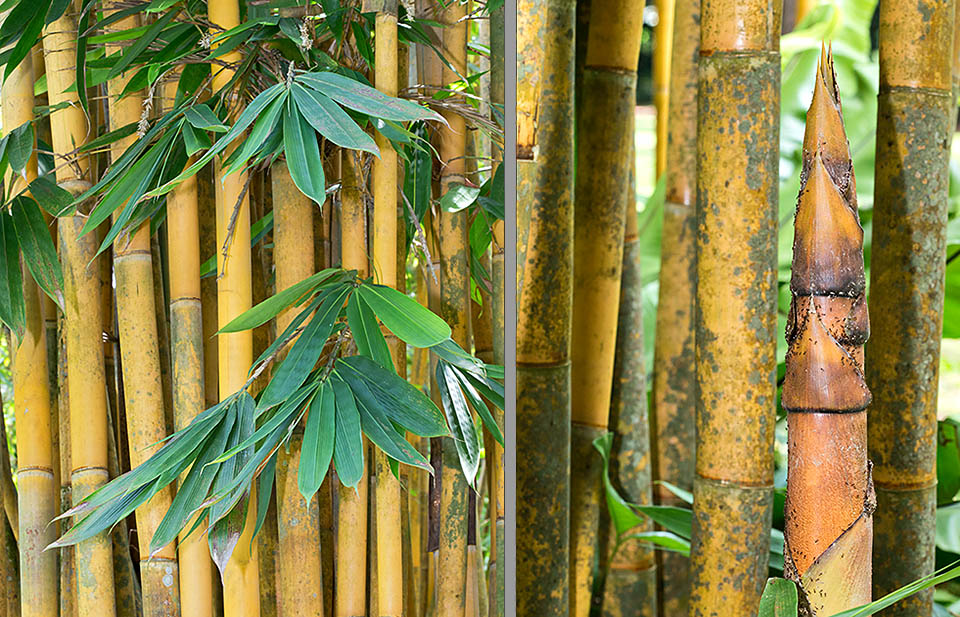Family : Poaceae

Text © Pietro Puccio

English translation by Mario Beltramini

Schizostachyum brachycladum can be 13 m tall © Giuseppe Mazza
The name of the genus is the combination of the Greek verb “σχιζω” (schizo) = to split, divide and of the substantive “στάχυς” (stachys) = spike, with reference to the spacing of the small spikes; the name of the species is the combination of the Greek adjective “βραχύς” (brachys) = short and of the substantive “κλάδος” (clados) = branch, with obvious reference.
Common names: Bali kuning bamboo, sacred Bali bamboo (English); buho, kauayang buho (Tagalog); awi buluh, buluh lemang, buluh nehe, buluh sero, buluh tolang (Indonesian); buloh nipis, buloh lemang, buloh silau, buloh telang (Malaysian); kriap, phai kriap, phai pho, phai po, phai por (Thai); lồ ô (Vietnamese).
The Schizostachyum brachycladum (Kurz) Kurz (1870) is an evergreen rhizomatous species with cylindrical stems (culms), close together, erect, curved only at the apex, 6-13 m tall and of 5-10 cm of diameter, of green or bluish green colour with thin longitudinal darker occasional stripes, waxy white under the nodes. The culms are hollow between the nodes, with walls thick 2,5-6,5 mm, and internodes long 30-60 cm, covered by a sheath persistent long time, up to about 25 cm long, of brown colour and initially equipped with hispid reddish hairs; triangular erect lamina with pointed apex, 5-9 cm long and broad, slightly convex, pubescent. Ramifications at the nodes, starting from the middle of the culm, with 25-30 thin branches per node. Lanceolate alternate leaves with pointed apex, 15-35 cm long and 3-6 cm broad, initially covered by down, then glabrous, with rough edges. Inflorescences long 20-35 cm with spikelets grouped at the nodes, 1,5-2,5 cm long, with 1-2 flowers each, purple anthers 0,6 cm and white stigma; it blooms frequently, almost year by year, and the blooming does not cause the death of the culm. The fruit is a caryopsis (indehiscent dried fruit typical of the Poaceae), rarely produced.
It reproduces by seed, but more frequently by division of the tufts and portions of culm interred horizontally.
Species diffused in nature and frequently cultivated in the villages for its multiple uses, besides as ornamental, in particular the variety with yellow culms with possible thin longitudinal green stripes and green leaves which at times may present yellow stripes, in the humid tropical and subtropical climate zones, as it does not bear values of temperature close to 0 °C if not exceptional and for very short period. It requires full sun, or, at most, a slight shade, and a position sheltered from the strong winds; it is not particular about the soil, but grows better in the sandy, draining, maintained constantly humid ones, but without stagnations.

The stems, a growing one on the right, are 5-10 cm of diameter. The young shoots are edible, with bitterish taste © Giuseppe Mazza
Synonyms: Arundo cratium Oken (1841); Melocanna brachyclada Kurz (1866).
→ To appreciate the biodiversity within the POACEAE family please click here.
